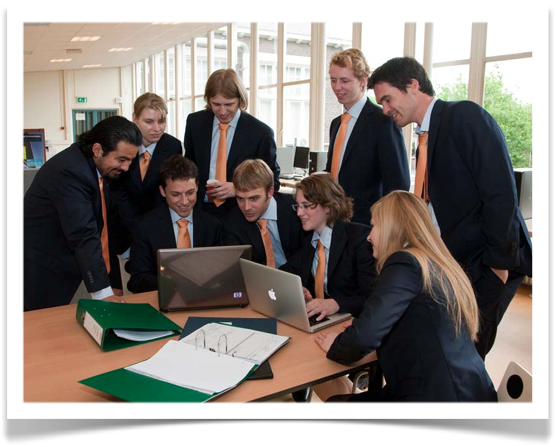Team:TU Delft/Notebook/brainstorm
From 2010.igem.org
Brainstorm
The key to a succesfull iGEM project is chosing the right subject. It took us from March until early May to decide which idea suited us best. We considered everything from bacterial eyes to plastic soup, and riboswitches to exhaled breath analysis. Our final idea was based on the current events at that time: the BP oil spill.
Hugo's Risk Scale
We used the Hugo Risk Scale (HRS) to determine whether an idea was feasible or not.
Risk is represented with a value from 0 (no risk) to 10 (very risky)
- Lac operon (or other piece of cake) + our biobrick
- Less than 5 genes or biobricks (copy-paste) + our biobrick
- Less than 10 genes or biobricks (copy-paste) + our biobrick
- Biobrick engineering <5, improvement of things already done
- Multi biobrick engineering >5, improvement of things already done
- Site directed mutagenesis of several genes, results unknown a priori
- Evolutionary engineering involved = sequencing
- Protein engineering involved, results unknown a priori
- A lot of genes and/or biobricks (>20), known genes in other species and characterized. Stress, social friction
- A lot of genes and/or biobricks (>20), Known genes in other species, not fully characterized. Start a project one-eyed = stress, social friction, high chances of collapse
- A lot of genes (>20), Unknown genes= characterization + sequencing + cloning. Start a project from nothing or partially blind, team-member losses + obituraries. Good side: paper in Nature and/or Nobel prize
Idea List
On this page you see a few of the other ideas we had, that might be an inspiration to future iGEM Teams:
- Exhaled breath analysis
- Soil Sampling
- Mosquito’s/Parasites
- Cell shrinkage
- Oil remediation (Hydrocarbon biodegradation)
- Bacterial buffer
- Rainbow pH sensor
- Ice melting
- Biofilms (Linked to cell density measurement?)
- Bacterial eye
- GMOs in the Gut
- Algae Bloom solution
- Appetite inhibitor (Caerulein)
- Teeth-plaque
- Cell differentiation
- Vaccines
- Quorum sensing
- Parasites/mosquitoes
- Heavy metals/calcium
- Gut delivery mechanism
- Sea water desalination
- Hydrogen sulfide removal
- Removal of Indool (toilet odor)
- Biological ship coating
- Chewing gum/Grafitti removal
- Motility for yeast cells
- Bacterial solar clock
- Yeast mating factors
- Bacterial battery
- Biological random generator
- Lamp of bacteria
- Polymer production
- Sensors of light, electricity, proteins, pathogens, CO2, O2, space, glucose, sound, metal, gravity, space, air, nutrients, HTP, magnetic fields, light (wavelength / intensity), temperature, receiver, medium, receptor, radiation, stress, heat, filter, conduction, speed, shear stress, gradient, flux, mutagens, pH, energy, smell, pollutants, products, gas, liquid, osmosis, salinity, prokaryote/eukaryote, DO, hormones, diode, pain, clinical parameters (such as urea => diagnostics), rotation, scan, computer, aging, telomeres, detergents, solvents, viscosity, membranes (and integrity), cell state.
 "
"

